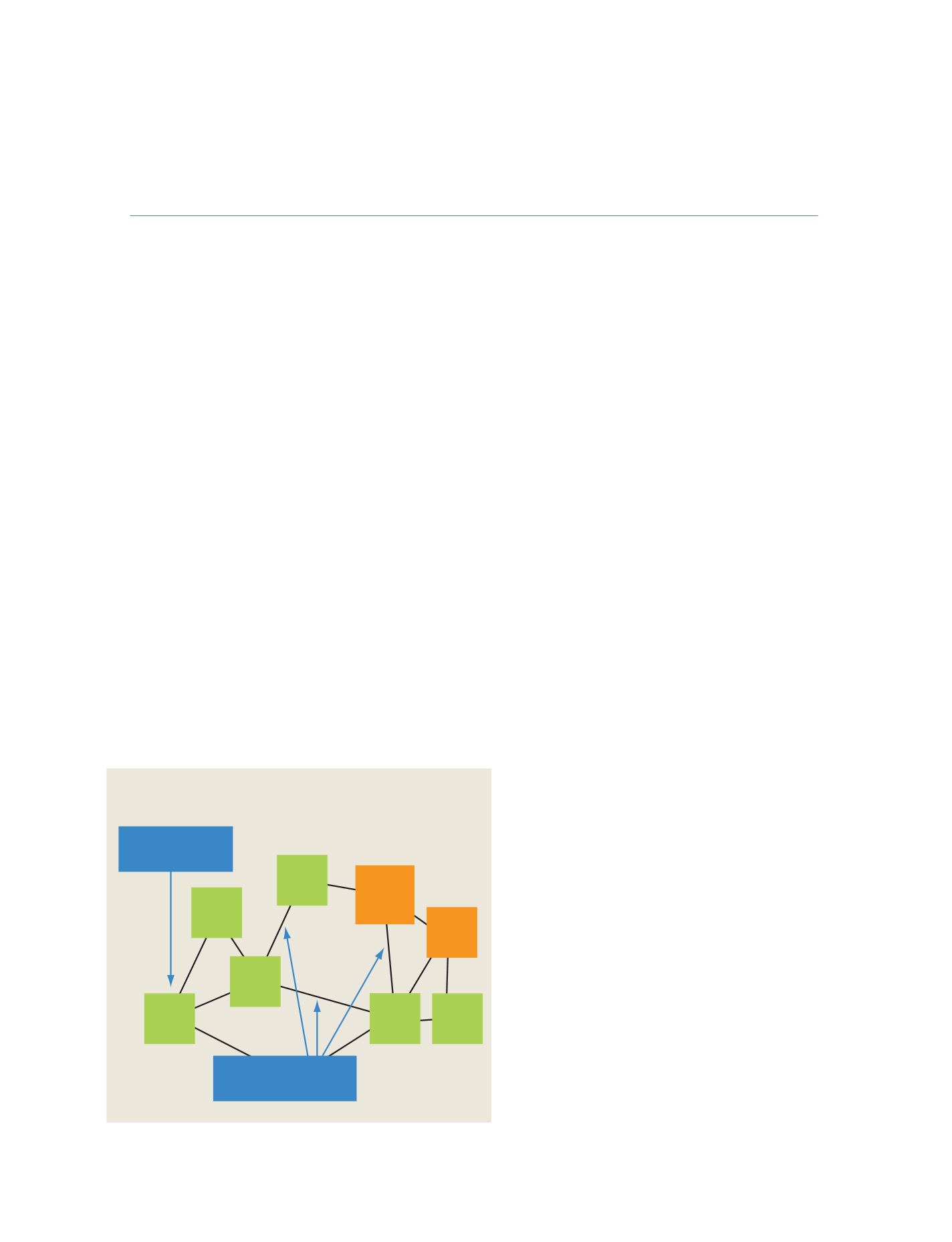

[
] 61
The Sensor Web: GEOSS’s foundation layer
Ingo Simonis, GEO Spatial Research
T
he Global Earth Observing System of Systems (GEOSS) aims
to continuously monitor the state of the Earth in order to
increase knowledge and understanding of our planet and its
processes. As a system of systems, GEOSS must integrate hetero-
geneous systems across institutional and political boundaries.
Timely delivery of earth observation data is key to identifying
potential threats, such as tornados, tsunamis, wild fires and algae
blooms, that may affect humans or infrastructure facilities.
Stored sensor data is the basis for analysing gradual processes, such as
increasing drought, water shortages or rising sea levels. The Sensor
Web presents a paradigm in which the Internet is evolving into an active
sensing macro instrument, capable of bringing sensory data from across
the globe to the fingertips of any individual. Based on internationally
adopted standards, the Sensor Web ensures interoperability among its
various components. Its software components and services work inter-
actively, without adaptations for arbitrary application domains.
The GEOSSWeb portal, as well as community portals, provide access
to data sets that have been processed and optimised to represent specific
aspects of our planet relevant to Earth observation applications. Users
can access large amounts of data sets in a convenient way, as graphs or
visualized on a map. For example, you could follow caribou tracks to
identify the correlation between their movements, annual variations in
snow coverage and a potential climate change. You could follow veld
fires in real time, analyse potential damage to commercial
forestations or electrical power lines, and calculate fire
spreading based on wind and topographical data. The
origin of the data is often hidden from the user; namely, the
Sensor Web, the foundation layer of the GEOSS.
The Sensor Web is a revolutionary concept for achiev-
ing a collaborative, coherent, consistent, and consolidated
sensor data collection, fusion and distribution system. It
is a new breed of Internet for monitoring spatio-temporal
phenomena appearing in the physical environment in real
time. Any kind of sensor, from a thermometer located at
a fixed position to a highly complex hyper spectral sensor
on board an Earth-orbiting satellite, will be available on a
global level in the near future.
Sensors can remain at fixed locations (e.g. as part of
weather stations), or move autonomously or by remote
control in physical space (e.g. on board vehicles, aero-
planes or satellites). Once deployed, each sensor associates
the phenomenon it detects with the location it currently
populates. This information is either stored on the sensor
for later access, or sent directly to aggregation systems.
Retrieval and processing of sensor data, and the manage-
ment of sensor devices, will soon be carried out by means
of distributed software entities that interoperate via the
Internet. Once the Sensor Web is widely used, millions of
sensors will be connected to a large network and will be
capable of producing georeferenced observation data.
Every sensor provides a small mosaic stone that helps to
generate a consolidated view of the world and get a better
understanding of the past, present and future situation of
our planet, as well as active processes and correlations.
The Sensor Web uses the underlying infrastructure of
the Internet to connect sensors and sensor networks,
sensor data processors and consumers. Consumers may
access data directly from the sensor, or from a data centre.
A fundamental design principle concerns the distributed
organization of sensors and storage of observation data.
Data is stored at, or close to its place of production. This
mechanism avoids unnecessary data duplication and
simplifies system maintenance.
Sensor providers can choose the level of access to their
sensors and the kind of data provided to the Sensor Web.
They remain responsible for their sensors and sensor
networks, can continue to operate them in established
modes, and can keep following proprietarily defined
procedures and methodologies. Additional support for the
standardized Web interfaces is the only requirement for
connection to the Sensor Web.
Sensor
Sensor
Sensor
Network
Legacy
System
Application
Sensor
Data
Store
Sensor web communication
Sensor web wrapper
Sensor
Network
Internet
The Sensor Web: a metasystem
Source: Ingo Simonis
GEOSS C
OMPONENTS
– O
BSERVING
S
YSTEMS
















